Our Blog - Southern Italy - Matera
Matera was an interesting little town that was built in a small canyon carved out by the Gravina River. It is one of the oldest continuously inhabited cities in the world, having been inhabited since the 10th millennium BC. The main reason to go to Matera, which is sometimes called la Città Sotterranea ("the Underground City"), is to look at the "Sassi". The Sassi are habitations dug into the calcareous rock on one side of the ravine. The Sassi include both houses, stores, and churches and there are quite a few of these "rock churches" in town.
A bit of trivia, because of the scenery and these caves, the city has been used several times in films as a setting for ancient Jerusalem. Probably the best known movies that were filmed here for Americans include Mel Gibson's The Passion of the Christ from 2004 and for the Amazons' city Themyscira in the 2017 film Wonder Woman.
We arrived in the evening and took some interesting night-photos, and you can somewhat start getting an idea of the way the city is built, with the buildings basically going down and down into the canyon, and then up and up on the other side.
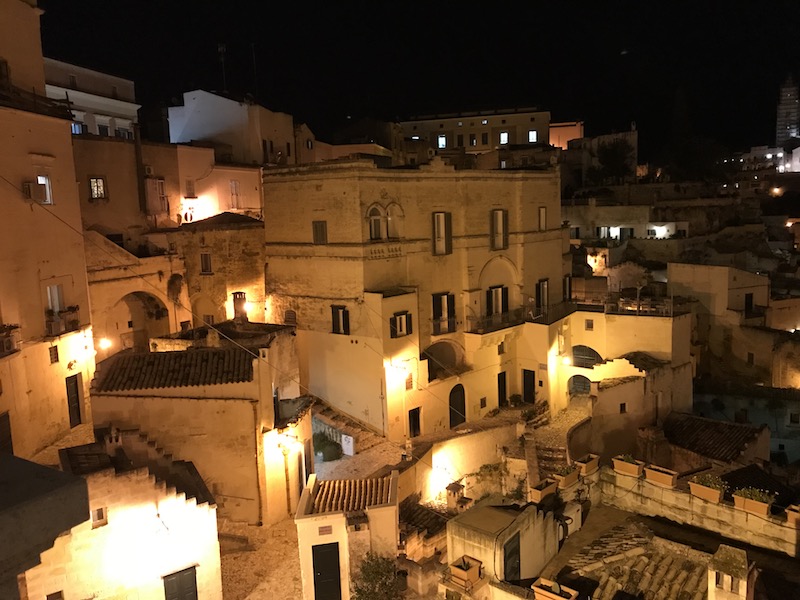




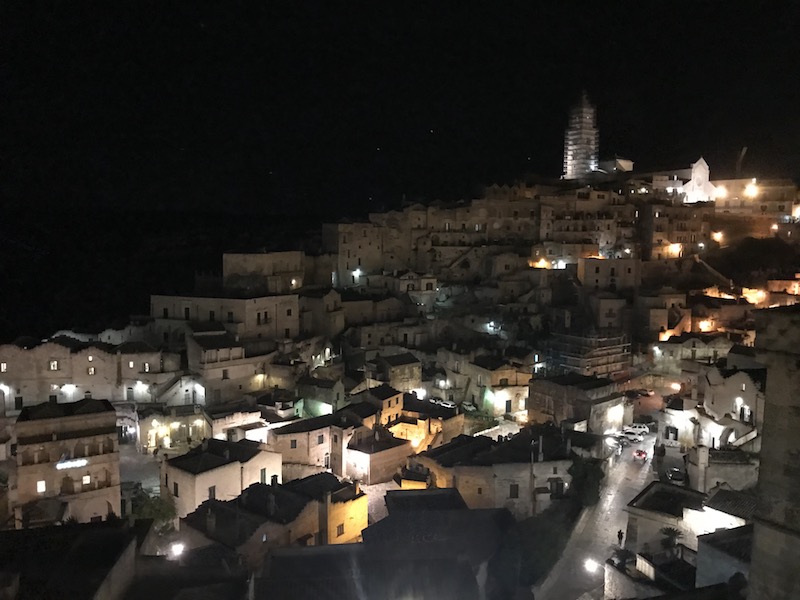
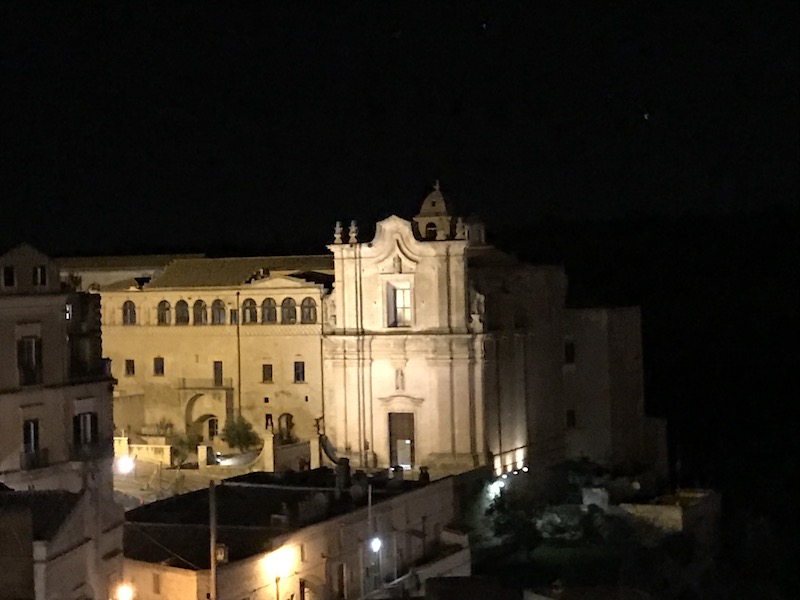


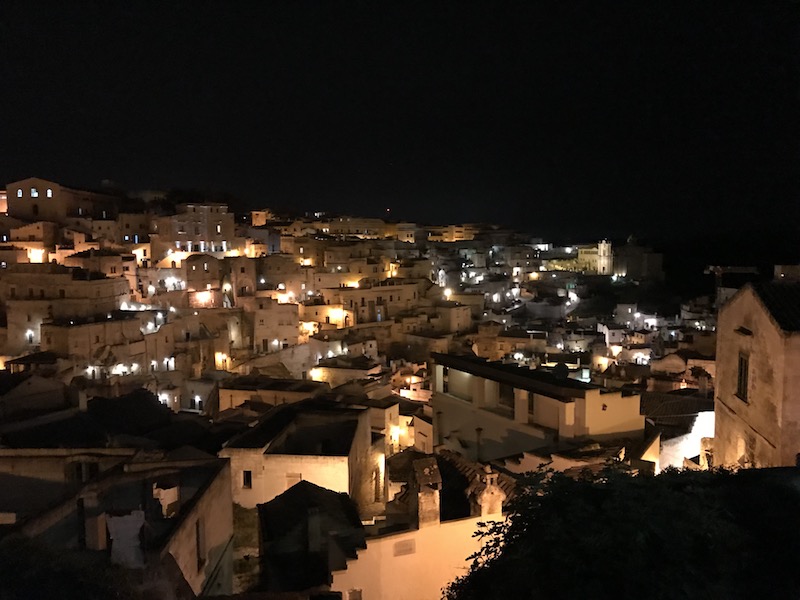
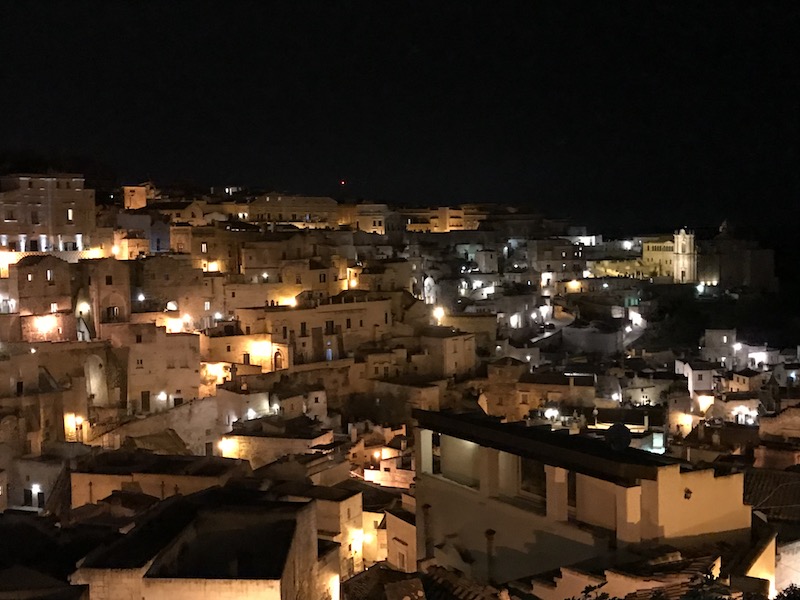

And now, some day pictures


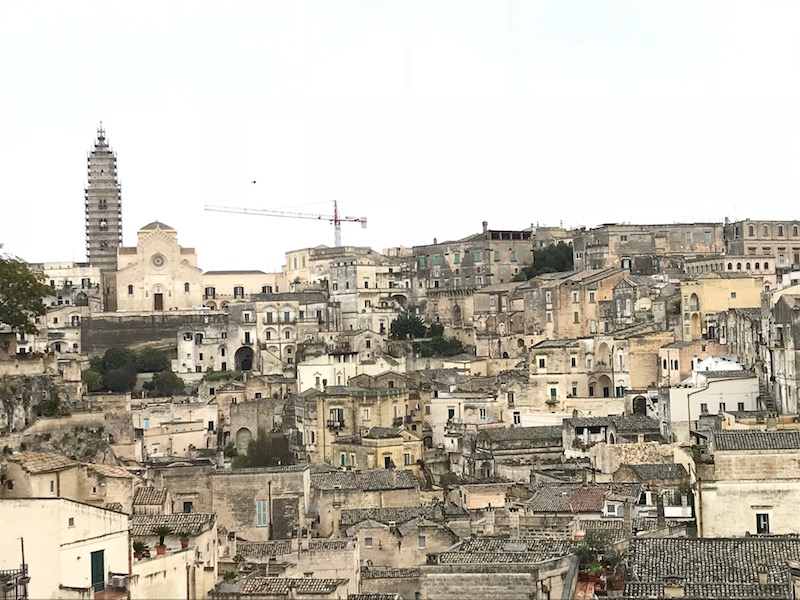
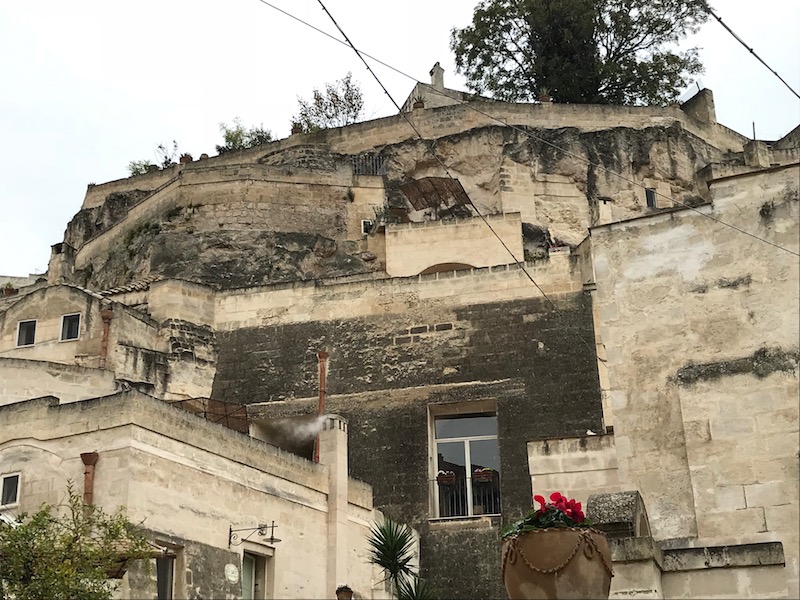















The Matera Cathedral, or officially, Cattedrale di Santa Maria della Bruna e di Sant'Eustachio, was built in the 13th century at the highest point of the city. The name indicates it is dedicated to the Virgin Mary (under the name Madonna della Bruna) and also to Saint Eustace. It divides the two districts that form the Sassi of Materia (Sasso Caveoso and Sasso Barisano). The cathedral is an example of Apulian Romanesque style and as with many Italian churches we've seen, the exterior is a bit simplistic, with the only real interesting point being the rose window on the west side.

You can see the same type of plan as with other churches, with Romanesque arches on columns forming the name and 2 side aisles. You can also see the gilded wood carvings that decorate above the arches and the frames of paintings on the upper floor. Most of this comes from changes in 1627 (the addition of stucco and decorations) and 1776 (the covering with gold). The elaborate main altar is done in polychrome marble.

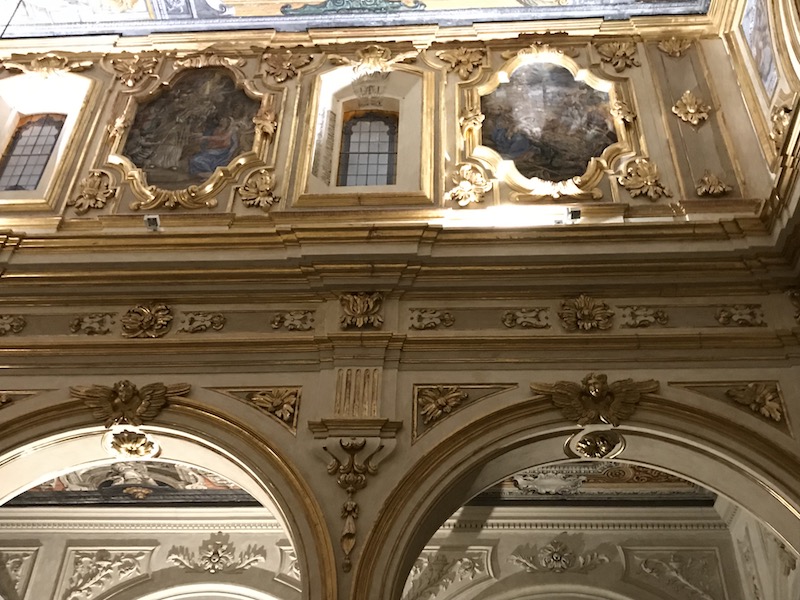


The ceiling is a trussed ceiling (that you can't see) that is then covered by a wooden false ceiling. In the 19th century, the 3 paintings were added by the Calabrian Baptist Santoro. The corners, that look like columns with statues in it, is a trompe-l'œil. Even the ceilings of the side aisles have painted masterpieces.

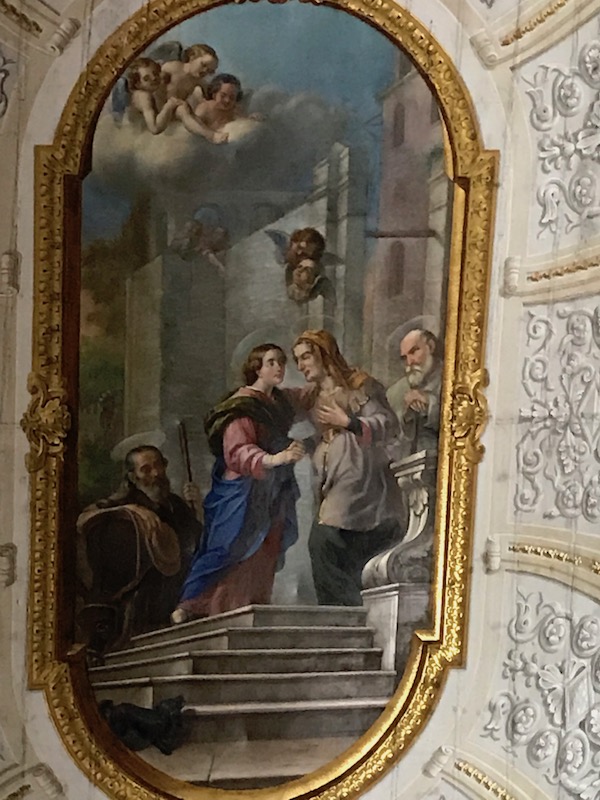

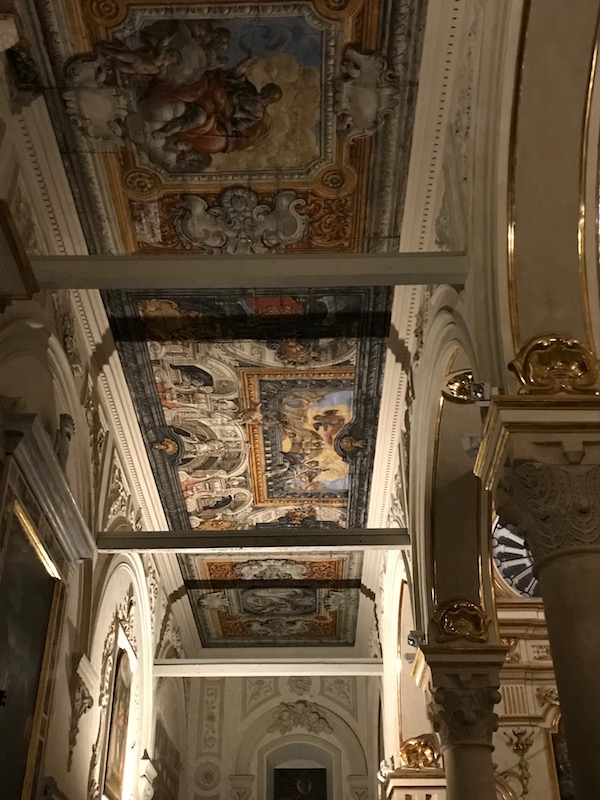
There are also a few Byzantine-style frescoes including these, with the one on the left depicting the Madonna della Bruna and Child.

The door on the main façade is not open and you enter from two doors located on Piazza Duomo. One of them is called "Gate of the Lions" for the two lions sculpted in the stone that flank it crouched supporting the columns. If you look at the lunette over the door, you can see somewhat of a middle-eastern feel to the decoration.


The Baroque façade of the Church of Saint Francis of Assisi dates from the 18th century although the building was built in the 13th century. There are delicate plant scrolls around the five windows and the door on the ground floor, and on the upper floor there is a central niche containing a statue of the Blessed Virgin, with angels holding up the opulent Baroque hangings. On the right and left of this central niche area are statues of St. Anthony of Padua on the right and St. Francis on the left.


Inside, you again see the Romanesque arches with plaster decorations and a very detailed ceiling.


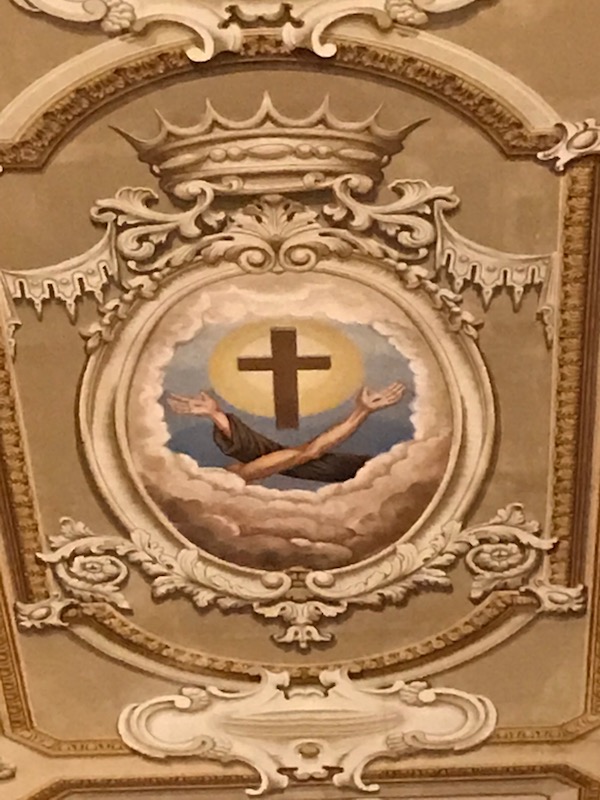
Church of San Giovanni Battista (Saint John the Baptist) was built in 1233 in the Romanesque style. The church was the first sacred building to be built outside the city walls but it was abandoned in 1480 during the War of Otranto because its isolated position outside the defensive walls of the city was thought to be unsafe for the nuns. The portal is delicately carved with floral designs and also has somewhat of a middle-eastern feel to me. Under the rose window is an 18th century polychrome stone statue of St John the Baptist carrying the Gospel in his hand, on top of which sits a lamb.

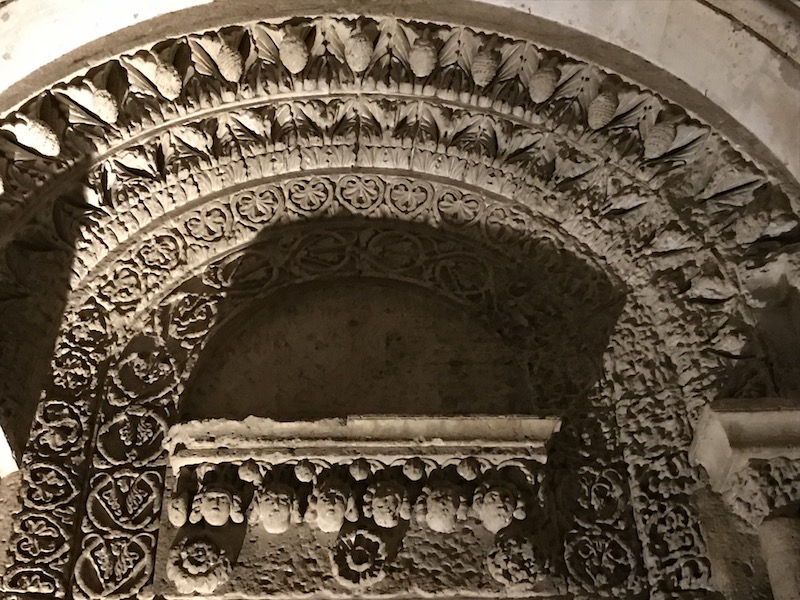

This interior is very different from the others in town and shows the original mediaeval style of the church. It wasn't always like this, as the interior was covered in the 16th century with frescoes that were removed in 1926. There are a few side chapels, including this one with a lovely altar with a 16th century fresco of the Madonna delle Nove.


An interesting note about the Sassi ... up until the 1950s, people were were living in these "caverns" that were dug into the rocks and, as you can image, they were basically where the poor lived. We went through one of the Sassi that was put back to show what it would have looked like in 1950. The government basically condemned all of the Sassi and the families were relocated to new public housing in the developing modern city. We went through one of them, Casa Grotta, which was furnished to show life in the home up to the end of the 1960's. The rounded entrance opens and you can see the husband and wife of the home, with the tools of their "trades".


The room is dug out of the rock and that entrance was the only way that light got into the room. This is a typical home, which has been split into 3 different areas: the kitchen, the farm, and the living area. The first picture, you can see the bedroom area to the right, the living area in the middle with the table, then behind the people is the farm. The kitchen is to the left of the people standing. There is no running water .. rain water trickles in from channels dug through the rock and is gathered into a cistern. There was also no "land" per se, so the farm animals basically stayed inside with the family. I pity the person who ended up sleeping in the bed next to the donkey! The last picture shows the bedroom, with two beds (one above), a baby cradle, and the guy in back in the bathroom (remember, no running water). So maybe the donkey-bed would have been better!

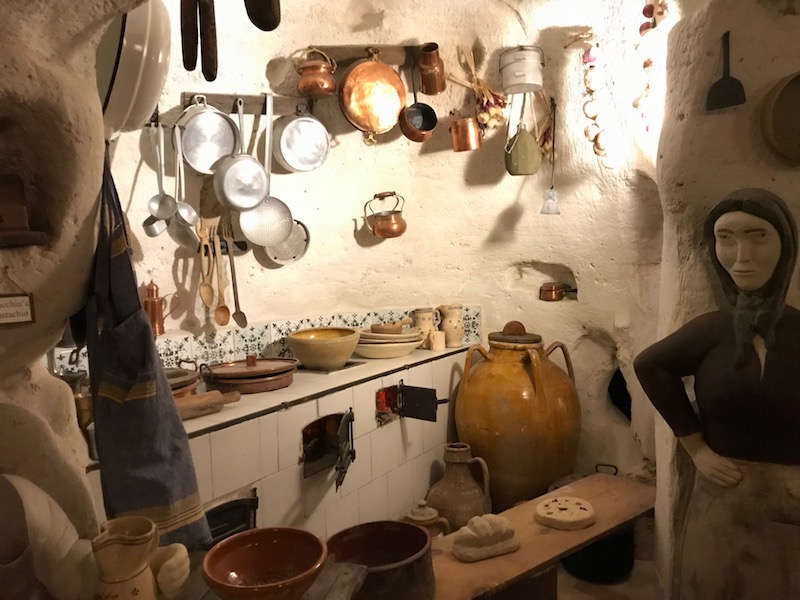



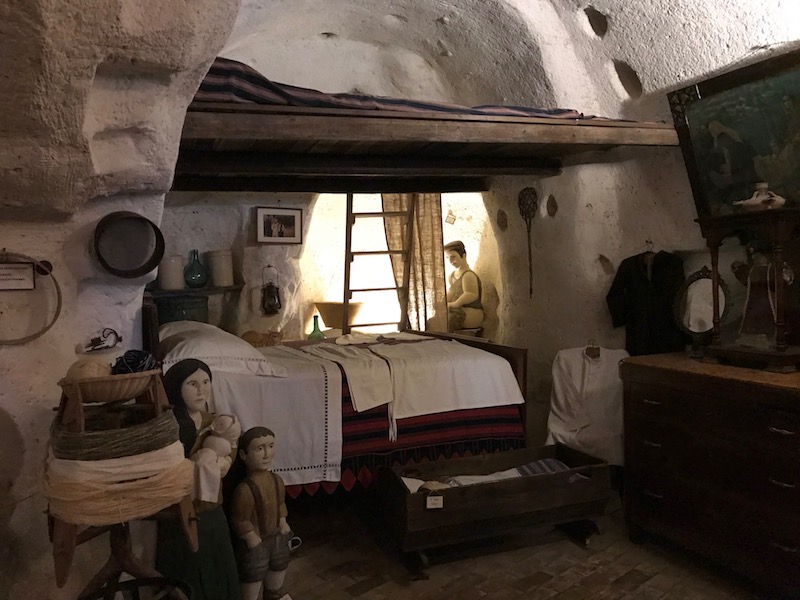
WOW is that a BIG SNAIL next to Tom's finger!!!

Here you can see how they have started turning these old Sassi into restaurants, pubs, and in some cases, B&Bs (in addition to the ones that are tourist attractions).

There are more than 150 rock churches in and around Matera. As the name implies, these are churches, based mainly in the Middle Ages, that were carved into the rock. The first that we'll see is the Complex of the Madonna delle Virtù and San Nicola dei Greci churches. The first was Madonna delle Virtù, which goes back to the 12th century, and is entirely excavated in the rock. It is one of the most elaborate rock churches, as it has vaults, domes, and arches, and is decorated with frescoes. Part of what is amazing about this is when you look at the columns and niches and realize that these were all carved out of the rock itself.

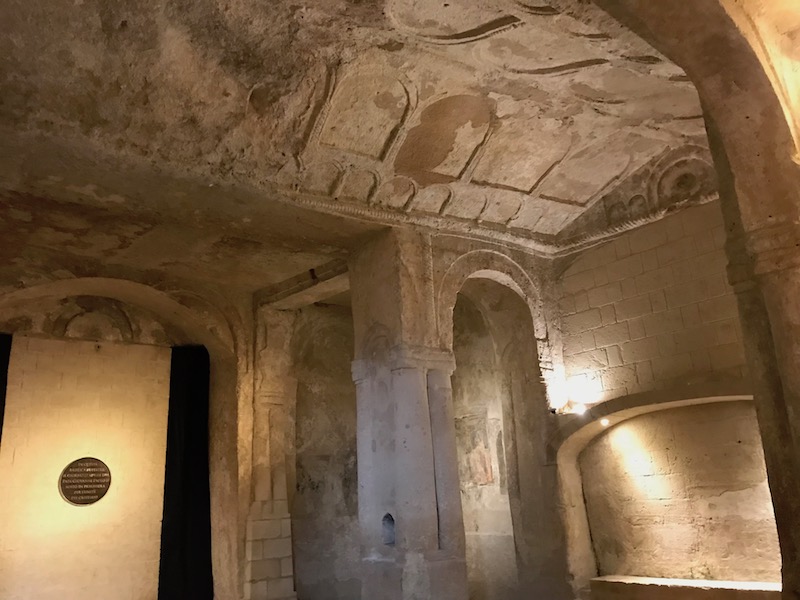




Then you head up a set of stairs (also carved into the rock) to get to the monastery. Here you can see a large open area surrounded by smaller little "cubby-holes" where the the small community of nuns would have lived. This is actually older, dating back to the 9th century when it was a small crypt that later was transformed into a monastery. it was used to film The Last Supper and the Washing of the Feet parts of the movie "The Passion of the Christ".
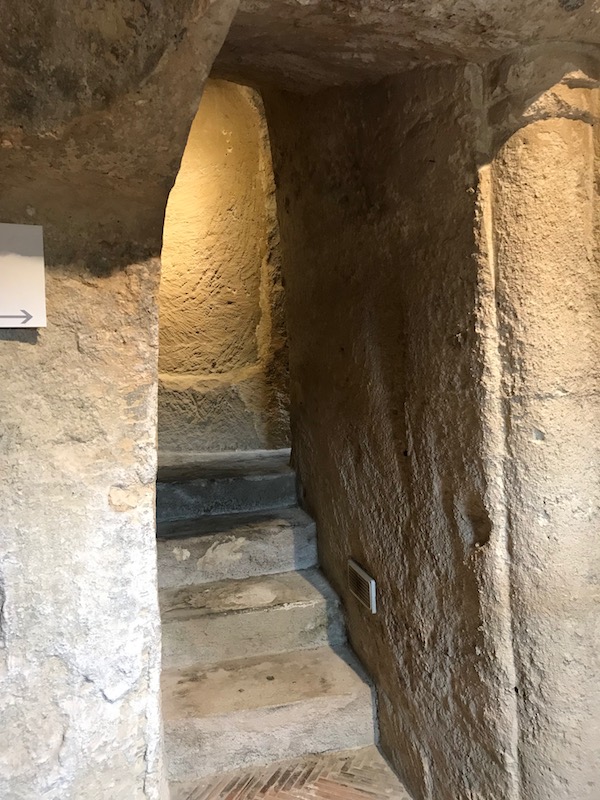


Then San Nicola dei Greci (Saint Nicholas of Greece), excavated in a Byzantine style and dating back to the 10th century, making it one of the oldest rock-hewn churches in Matera. There are additional frescoes that are very well preserved including a 13th century triptych that includes Saint Nicholas, Saint Barbara, and Saint Pantaleon, as well as a 14th century Crucifixion with the Virgin and Saint John the Evangelist.




Here you can see a channel dug into the rock that would have been used to collect rainwater into a cistern.

The complex of Sant'Agostino sits perched on the cliff, and contains a monastery built in 1592 by monks of the Saint Augustine order (hence the name) and an adjoining church, built in 1594. It was destroyed by a terrible earthquake in 1734 and rebuilt. Again, a very simple exterior, with the church on the right side and then the monastery attached to the left.


The interior is clean and well-kept, minimally decorated with grey on bright white walls. There are a set of side chapels, many with elaborate Baroque-style altars. The pipe organ dates from 1770 and is protected by an inlaid wooden balustrade. The organ, gilded and painted, built by the Liguori brothers from Montemurro.


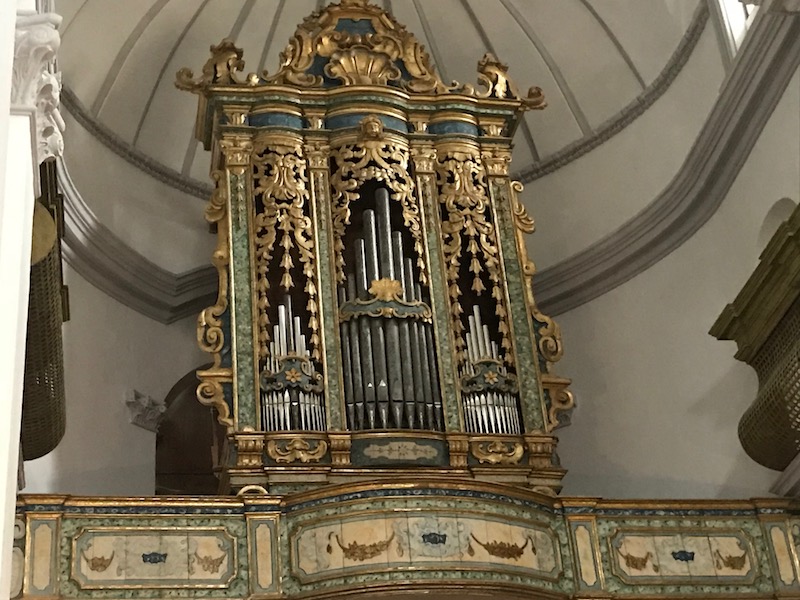
The Rock Church of San Giuliano is actually located inside the church of Sant'Agostino, and you enter it through a corridor dug into the rock on one side of the church. The walls are covered with frescoes that date back to the 1600's, depicting the Holy Trinity (depicting Father and Son both wearing crowns with the dove of the Holy Spirit on a golden orb), a crucifixion, the Madonna and Child, San Leonardo, Saint Barbara, and Saint Silvestri.

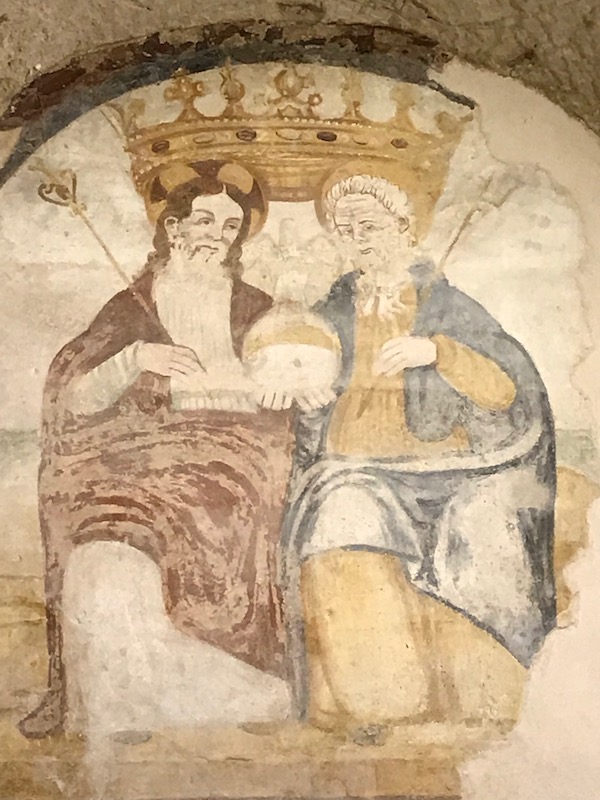



Another rock church, this one San Pietro Barisano. The first building of the rock church dates back to about the year 1000, but then rebuilt in the 13th century, and the masonry façade was added in 1755. This one has at least somewhat of a normal church entrance. Many of the works of art are missing as they were stolen or ruined in the 60's and 70's. There are many different frescoes and altars (some with only parts of the original altar). You can also go down into a small cave that is the crypt of the church, which includes seats carved out of the rock.




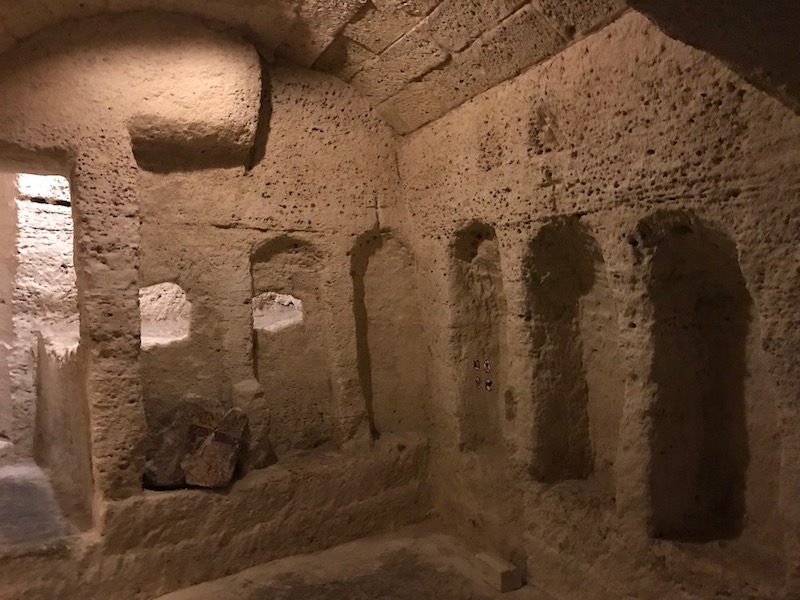

We headed out of town and the weather turned a bit rainy and cloudy. Throughout this part of the country, we kept seeing these cities (or towns) built almost literally at the top of mountains (or really tall hills). In some cases with the weather, the clouds were actually below the towns.




